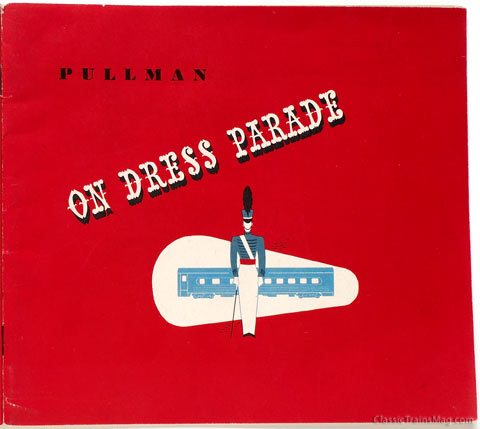Q Lately I have noticed that many freight cars, including tank cars, boxcars, and hoppers, have five to seven vertical reflective strips on their sides. What’s the deal? — Frank C. Darling Jr., Wolcott, N.Y. A The objective is better nighttime visibility. In January 2005, the Federal Railroad Administration issued “The Final Rule on Reflectorization […]
Section: Train Basics
Ask Trains from May 2008
Q As a boy, I used to watch the magnificent Southern Pacific cab-forward steam locomotives on their way to Donner Summit in Northern California. Someone referred to them as Mallets. What’s the true definition of a Mallet? — C.W. Haffey, Bakersfield, Calif. A By definition, a Mallet (mal-LAY) is an articulated, meaning the two engine […]
Ask Trains from October 2008
Q My 5-year-old grandson asked me, “Where do engineers go to the bathroom?” I told him that locomotives probably have a restroom similar to those on airplanes. What restroom facilities are available on locomotives, and where are they located? Who runs the train in his absence? Are comfort breaks governed by either federal or union […]
Pullman on Dress Parade

The Summer 2008 issue of Classic Trains magazine pays tribute to the Pullman Company. Published in 1948 at the height of postwar passenger optimism, the 40-page booklet “Pullman on Dress Parade” showcased the company’s various accommodations and services. Pullman “On Dress Parade” DOWNLOAD […]
Online extra: Jacksonville Terminal train chart
Daily trains in and out of Jacksonville Terminal, 1946. Reprinted from June 1978 Trains magazine. Jacksonville Terminal DOWNLOAD […]
Ask Trains from August 2006
Q What does the name “Soo Line” mean? Is it an acronym, an abbreviation, or something else? I’ve asked many rail enthusiasts and gotten many different answers. – Reed Newlin, Maryville, Ill. A The Soo Line got its nickname from its original full name, the Minneapolis, St. Paul & Sault Ste. Marie. “Sault,” pronounced “Soo,” […]
GPS helps you find the trains
It was December 2005 when I wrote the rough draft of my story on using GPS (Global Positioning Satellite) to help when chasing trains in unfamiliar lands. Between that time and the time the article appeared in the July 2006 issue of Trains, I kept an eye on the advertisements from national electronic retailers (Best […]
Booster units
Say you’re an engineer running a multi-unit diesel consist on a freight train. During the trip, it becomes necessary to remove the lead unit because of a grade-crossing entanglement, some mechanical problem, or to give to another (underpowered) train. No problem – the second unit can lead as well as the first, so you resume […]
CTC: Remotely directing the movement of trains
Who controls the movement of the trains after the tower is closed? The train dispatcher is the most common heir to the towerman’s duties, but not always. The type of control used depends on the nature and density of the rail traffic handled at the location. Ways to preventing trains from colliding when railroad lines […]
Defect detectors
An Amtrak train en route from Milwaukee to Chicago on Canadian Pacific’s double-track main line hurtles by a metal cabin and some trackside apparatus. Over the radio, a stilted voice intones “CP detector, milepost five seven point six. Main track: two. Total axles: one six. No defects. Temperature: five three degrees. Detector out.” A moment […]
Freight car classifications
The Association of American Railroads has 11 basic classification of freight cars. Most of the major classes have subclasses, and you’ll find them by clicking on the links below. The following was taken from the July 2002 Official Railway Equipment Register, published by Commonwealth Business Media. The National Model Railroad Association also offers reprints of […]
Freight car markings
Conrail. Milwaukee Road. Santa Fe. Rail Box. Anyone who watches freight trains is familiar with these and other names blazoned across the sides of freight cars. But that’s just advertising, which some companies omit for economy’s sake. And if a car changes hands, its new owner may not even bother to paint out the old […]
